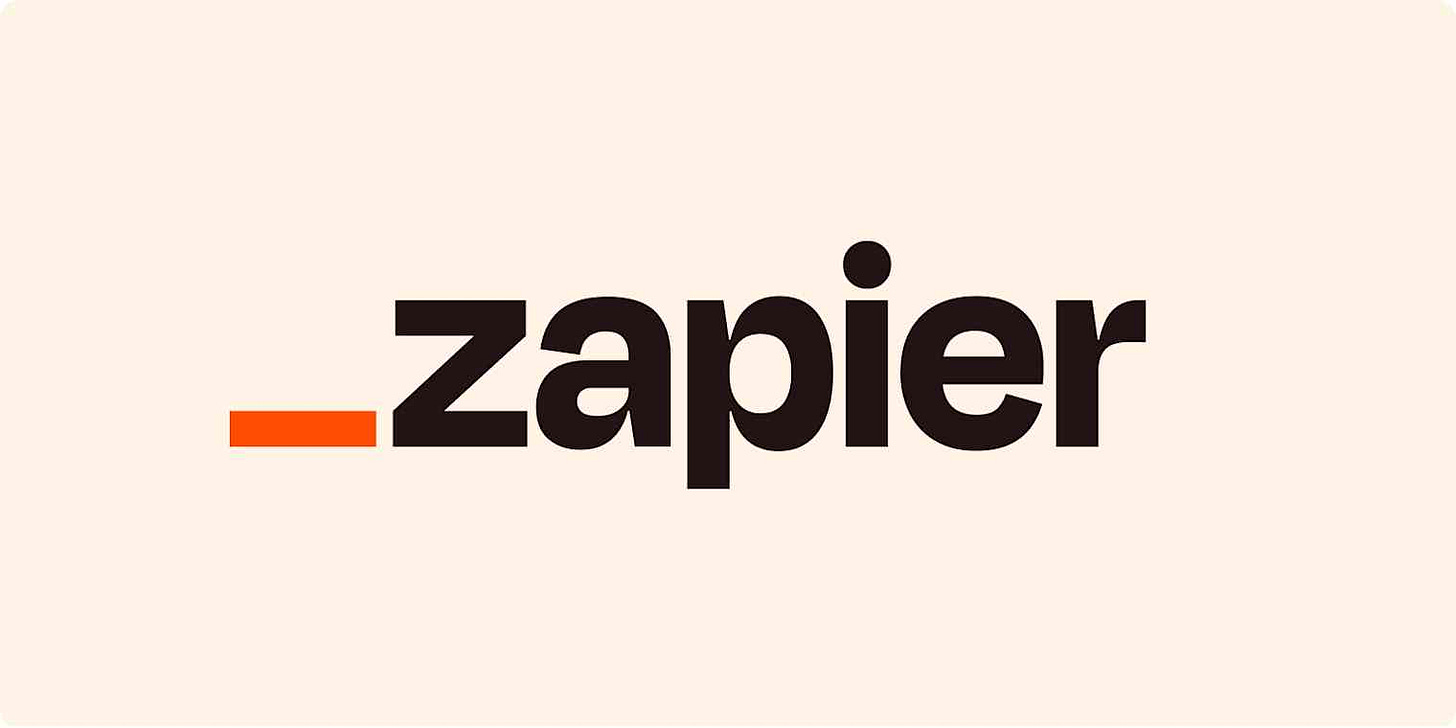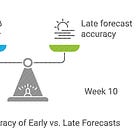Top Metrics for CROs in the $10M to $30M stage
For companies that have reached $10M in revenue, the next meaningful milestone is scaling to $30M. This stage represents a transition from startup growth to building a professionally managed small-to-medium enterprise. It requires a shift from founder-driven operations to scalable systems, processes, and leadership structures.
There are some telltale signs the business needs to shift from Founder Led Sales to a more scalable setup. If a company sees 3–4 of these happening consistently, it's probably time to start transitioning to a repeatable, team driven sales process.
This week’s newsletter brought to you by
RevOps chaos slowing you down? Juggling disconnected tools, manual reports, and clunky workflows kills productivity and revenue. Zapier automates your processes, seamlessly integrating your sales, marketing, and RevOps stack—so you can focus on growth, not busywork. Start automating today and turn inefficiency into impact. Try Zapier now!
1. Founder Becomes the Bottleneck
Deals are slowing down because the founder can't be everywhere at once.
Prospects are waiting for the founder to join calls, review proposals, or negotiate.
2. Sales Are Too Dependent on the Founder’s Network or Persona
Most wins come from the founder’s relationships, charisma, or product expertise.
Without the founder in the room, the close rate drops significantly.
3. You Have a Repeatable Sales Motion
You’ve closed enough deals to spot a pattern: similar ICPs, common pain points, clear sales stages.
There’s a consistent way of moving deals from demo to close.
4. Your Product Has Achieved Some Degree of Product Market Fit
Customers are getting value, sticking around, and referring others.
Churn is manageable or improving.
5. Sales Training Can Be Documented
You can articulate what makes a deal qualified, how to run a successful discovery call, and how to pitch the product effectively even if it's still a bit scrappy.
6. The Founder Needs to Focus Elsewhere
Time spent on sales is now taking away from other strategic priorities: fundraising, hiring, product, partnerships, etc.
The business can’t scale unless the founder starts delegating more.
7. You Want to Scale Revenue Predictably
You’re ready to hire SDRs, AEs, or build out RevOps but need to create a system they can plug into.
You want to turn founder intuition into a scalable playbook.
8. Inconsistent Customer Experience
Customers get whiteglove treatment from the founder… and a very different experience from anyone else.
Sales handoffs to Customer Success or onboarding are messy or ad hoc.
From a GTM perspective, companies aiming for the $30M milestone should focus on metrics that drive repeatable and efficient revenue growth. Below are the most critical metrics and their importance:
1. Pipeline Velocity
Pipeline velocity measures the speed at which leads move through the sales funnel. Faster pipeline velocity indicates efficient sales processes and quicker revenue generation. Just be careful blending all of your segments together. If you have sell to not only the Enterprise but also Mid Market then you could make some seriuos misjudgments regarding how efficient you are. You might be equally inefficient in both segments but because MM moves faster than Enterprise you might believe you’re improving efficiency mistakenly. When in fact when you benchmark both motions against third party studies you reassess yourself as a laggard.
Companies can identify bottlenecks in their GTM motions (e.g., inbound vs. outbound) and optimize accordingly. Pipeline velocity is typically calculated as
Pipeline Velocity = (# of Opportunities) × (Win Rate) × (Average Deal Size) ÷ (Sales Cycle Length)
Just be careful because there are several flaws with this compound metric.
Assumes Uniform Quality of Opportunities: Not all pipeline is created equal. A flood of low quality leads can inflate the “# of Opportunities” and make your velocity look great… until those deals die. As I like to say: garbage in, garbage out.
Heavily Influenced by Outliers: one big whale deal or a super fast close can skew Average Deal Size or Sales Cycle Length, especially in low volume pipelines.
Lagging Indicator: velocity is based on historical data so it doesn't help much for predicting performance in a rapidly changing market or after big GTM shifts. It’s backward looking by nature.
Can Encourage the Wrong Behaviors: reps might prioritize fast closing, low value deals to boost velocity. Or sandbag slow moving high value deals that would hurt the metric.
Difficult to Benchmark Across Teams or Segments: comparing SDR-led SMB pipeline vs. AE-led Enterprise pipeline using the same velocity formula is misleading — their cycles, deal sizes, and win rates differ dramatically.
Masking Root Causes: a declining velocity doesn’t tell you why. Is it fewer opps? Longer cycles? A pricing issue? You have to dissect each input to diagnose the real problem.
Doesn’t Capture Pipeline Coverage: you might have great velocity but still not enough pipeline to hit your number.. Velocity ≠ pipeline health or quota attainment on its own. Please see recent articles on pipeline coverage:
2. Customer Acquisition Cost (CAC)
This metric measures the cost of acquiring a new customer, including marketing and sales expenses. But just like Pipeline Velocity it is a compound metric. So be very careful. In fact, when you deal with compound metrics you want to separate each metric and track them individually in order to improve said metric. But CAC nonetheless remains an important metric for investors. As companies scale, keeping CAC under control is essential for profitability. A high CAC can signal inefficiencies in targeting or conversion strategies.
CAC = Total Sales & Marketing Costs ÷ Number of New Customers Acquired
What should you include in CAC?
Salaries for sales and marketing teams
Paid advertising (Google Ads, LinkedIn, etc.)
Software tools (CRMs, marketing automation, etc.)
Contractors, consultants, agencies
Content creation costs
Events, sponsorships, travel
Commissions and bonuses related to customer acquisition
Work with your FP&A partners to get accurate data. Common mistakes I often see when calculating CAC:
Not time aligning costs and acquisitions (e.g., including expenses from a quarter when you didn’t acquire those customers).
Ignoring overhead or shared costs that contribute to acquisition.
Mixing in expansion or upsell customers instead of only new logo acquisition.
3. Gross Revenue Retention (GRR)
GRR is the percentage of recurring revenue retained from existing customers, excluding upsells. GRR highlights customer satisfaction and product stickiness. High retention rates reduce reliance on new customer acquisition for growth.
GRR = (Starting MRR - Churned MRR - Contraction MRR) ÷ Starting MRR
Or if you’re using ARR
GRR = (Starting ARR - Churned ARR - Contraction ARR) ÷ Starting ARR
GRR Does Not Include:
Upsells
Cross-sells
Expansion revenue
That’s what differentiates it from Net Revenue Retention (NRR), which does include that. Also! Do NOT include trial or pilots in your GRR calculation. Instead, you want to measure Pilot / Trial conversions as a separate metric.
4. Sales Conversion Rate (not just win rate)
This tracks the conversion rates all throughout your acquisition process. The percentage of leads that convert into paying customers. The percentage of one opportunity moving to the next. A strong conversion rate reflects effective GTM strategies, including lead qualification and sales execution. Winning by Design does an excellent job of diagramming this.
5. Time-to-Value
Keep reading with a 7-day free trial
Subscribe to RevOps Impact Newsletter to keep reading this post and get 7 days of free access to the full post archives.





